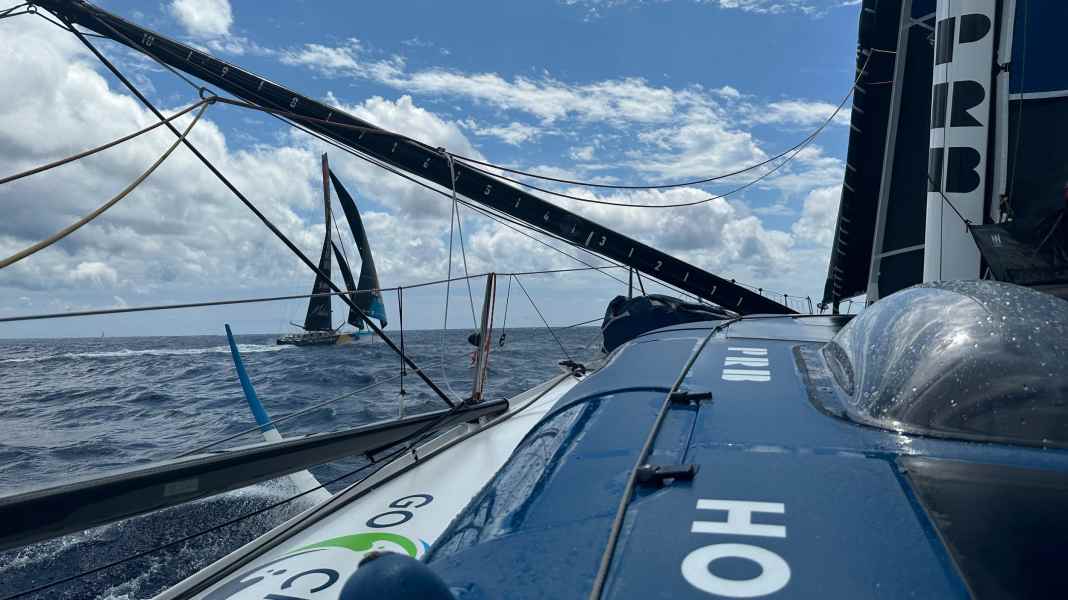
This transat does not adhere to any rules, and if it follows a script, then it must have been written by a sadist. Because it hardly allows the 28 skippers a moment's respite. As slow as the New York Vendee started in the first 24 hours, it has been going at a brisk pace ever since.
Even before the "share-the-ocean waypoint", which is around 170 nautical miles south-east of the virtual starting line, the Imocas were already reaching double-digit speeds in the freshening north-westerly wind and supported by the Gulf Stream. And so it was to remain for the leaders, in which Boris Herrmann has firmly established himself. He averaged around 27 knots at times and, together with Charlie Dalin, was always among the fastest.
Together with Nico Lunven, he had broken away from his western position yesterday and passed almost everyone in the east of the field. At the waypoint, only Jérémie Beyou, the "Charal" skipper, was just ahead of him, but Boris later left him behind.
Boris Herrmann in the leading group
Tracking the course of the race is not easy because the weather data in the tracker and in the routings does not correspond to what is actually happening at sea. The Gulf Stream also has more or less of an effect, which is why statements about speed potential are little more than a guessing game. The sailors themselves are very reluctant to provide information because they have their hands full keeping their Imocas on the foils.
Only a few short videos give a glimpse of the hardships faced by the soloists. Sam Davies ("Initiatives Coeur"), for example, looked into the GoPro from narrow slits in her eyes as she reported with recognisable delight at 25 knots that she had finally "switched to dragster mode" after a "complicated night". Romain Attanasio ("Fortinet Best Western"), who sails Boris' former "Malizia 2", described the start in all seriousness as "quelle journée de merde" - in good German: "What a shitty day!"
Boris is also communicating much less than usual - a sign that he has fully arrived in the race and is fully focussed on it. He was in second place on Friday afternoon and was faster than the entire front of the field. It is noticeable that he is positioning himself further upwind, i.e. further north, in order to make up as much ground as possible towards the north-east for as long as possible.

Like his closest rivals, he faces a tricky transition tomorrow. During the night, the wind will become more patchy, and later it will be important to get to the back of the low pressure system that hit the Imoca fleet with thunderstorms and strong winds in the initial phase. Once again, gusts of up to 40 knots are expected in the cells that form along the front. At least that's what the models say.
New York Vendée: Difficult decision ahead
"The passage of the coming front will probably redistribute the cards," believes Hubert Lemonnier, the race director of the New York Vendée. The Swiss Justine Mettraux ("Teamwork - Group SNEF"), who is 50 miles behind Boris, says: "It's not easy to develop a strategy and find the best course line".
This applies all the more to the rest of the regatta, which will present the skippers with a difficult decision in a few days' time: to sail far to the north in the hope of making more way in the rough winds, or to bolt against for days on the great circle course. But perhaps the bitchy North Atlantic will serve up another surprise.
So far, it looks as if the New York Vendée will be a long and tiring race - and that the previous reference time from 2016 (9 days, 16 hours) could remain despite all the progress in the Imoca class.
